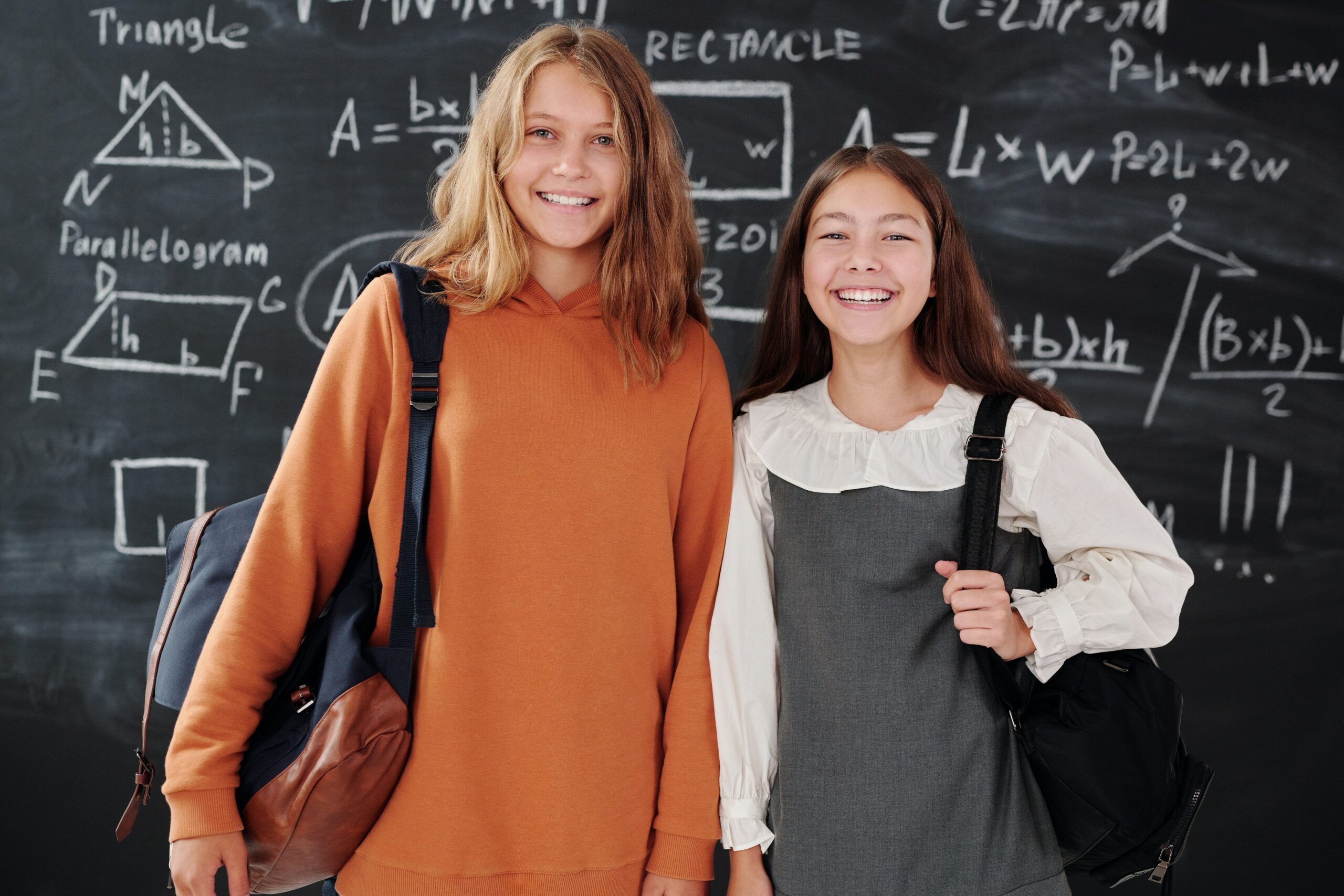By Dr. Michelle Garnett and Prof Tony Attwood
Autistic children tend to need explicit assistance to help develop their understanding of friendship and even how to cope with being with other children. Increasing the autistic child’s ability to understand social communication is a very important goal to work on at both school and home. Research shows that having just one friend at school can be a protective factor in preventing mental health problems like anxiety and/or depression (Bayer et al, 2018; Brendgen et al, 2013). For children who are excluded or bullied having just one friend can act as a buffer, preventing depression (Bukowski et al, 2010).
A recent study examining the qualitative differences between autistic and non-autistic children found that most autistic children had a best friend, but the quality of the friendship was lower than for non-autistic children, and that while all children experienced less depression if they had one friend, autistic girls experienced higher levels of anxiety about friendship, highlighting the need for assistance for their anxiety as a central part of providing support (O’Connor et al, 2022).
Some children will choose to mask their autism and will appear to be very good at friendship at school, but the effort is exhausting, and the mask ‘falls off’ the minute they are out of school. These children still need opportunities to learn about friendship, but also need to learn about who they are beneath the mask, and support to choose friends who will accept them as they are. We know from extensive clinical experience that masking can lead to both depression and anxiety.
In addition to providing support and explicit guidance on friendship for autistic children, it is important to provide support to their friends or potential friends, a successful interaction takes two. The quality of friendship for an autistic child can be increased by teaching non-autistic children how to be more inclusive and supportive to their autistic friends.
We write this article to assist parents and teachers to encourage friendship skills not because we wish to change autistic children, but because we seek to give them skills for navigating a social world that can be confusing and rejecting if they do not know the codes. An analogy is that it is a bit like moving to Japan and choosing to learn the customs and language to be able to find friends and a job, not to become Japanese.
We recommend several strategies for encouraging friendship at primary school. Four are covered in this blog, and four next week in Part 2. There is a list of helpful Resources at the end of each blog.
Increase your knowledge about autism, especially the social codes of autism
Autistic friendship can look different to non-autistic friendship. For example, an autistic child may use less eye contact than expected, have a neutral expression when you would expect them to be upset, and to act in ways that seem deliberately offensive. If your child’s nonverbal communication is difficult to read or you are finding that you are making negative judgements about them, consider that their social codes may be different to yours, and you may be misreading them, and this may also be occurring within their friendships at school.
The “double empathy problem” was first recognised and described by Milton (2012) and explains that as much as an autistic person may struggle to understand the nonverbal communication of a non-autistic person, non-autistic people struggle to read autistic people. The double empathy problem is thought to cause increased mental health issues for autistic people (e.g. Mitchell et al 2021). Understanding the autistic child’s social codes will assist you to form a better relationship with them and will inform how you assist them to make and keep friends at school.
Create a Success Book
An autistic child, even one who camouflages, can often feel that they are unsuccessful socially, and can worry about their friendships. If they are struggling to make friends or are bullied and/or excluded they will wonder what is “wrong” with them. We find that it is very important to assist an autistic child to develop a healthy self-concept and self-esteem early. The person may be very good at spotting their own errors, but rarely recognise or remember their successes. For this reason, we suggest creating a ‘Success Book.’ Include in the Success Book their social and other successes in verbal and pictorial form. Include photographs of the child achieving success with others as much as possible, including photographs of successful play dates, written positive comments from peers and others, time with animals (they count as friends), a screenshot of an Internet friend or their positive comments or a happy conversation, descriptions of happy social occasions. These are often likely to be one-on-one. Be inclusive of all age ranges.
Make the book as much about happiness and pleasure as it is about the question, ‘who am I’? Include their favourite clothes, TV characters, music, and the sort of person they are, using personality adjectives and examples of how these are evident. Include the sort of activities that relax them and make them feel happy.
The Success Book will provide a physical and tangible record of successful social and life experiences. Autistic children need potent visual reminders of their success across many areas to feel confident socially. When their confidence is increased, they can access more social skills, both intuitive and learned skills. The book can also serve as a ‘quick fix’ in times of emotional distress, when looking at the book can help remind them of things they are looking forward to and the positive things people have said about them.
Start projects on the basic emotions
Reading faces is the ‘foundation stone’ in the development of social skills and will assist the child in both learning how to manage anxiety and friendship development. Autistic children often use only the mouth to read emotions and need practice and assistance to read the eyes, and the whole face in context. To do this, we recommend starting a project on emotions.
Start with the emotion of Happiness. Collect pictures of happy people and photographs of the child and people they know, feeling happy. Collect lists of songs, written anecdotes, lists of favourite things, etc.. Collect many potent reminders. Next, create a Happiness thermometer and generate a list of words meaning happy, at various levels. Place the labels for happiness on the thermometer at the appropriate level. Create lists of what make other people happy and what they can do to create happiness. Discuss the benefits to them of assisting others to feel happy. Once the emotion of Happiness is fully explored, move onto Sadness, then Fear/Worry, then Anger/Affection. Create a project from each emotion. This strategy will increase the child’s understanding of their own and other people’s emotions. In addition, the Happiness Book can be used alongside the Success Book to help your child feel happy when experiencing self-doubt, stress, sadness or anxiety.
Seek to understand the autistic child’s perspective
Comic Strip Conversations were invented by Carol Gray (see link below in Resources section). They are a wonderful visual way of understanding your child’s perspective and to help them to think about other people’s perspectives. You will need paper and coloured pens. Ask your child to assign a basic emotion to each pen colour. Draw the situation that is concerning them or someone else using stick figures, no need to be an artist unless you are lucky enough to be one! Starting at the beginning, at each step ask your child’s what they were thinking and feeling, and what they said, and what they thought the other people involved were thinking and feeling. Draw thought and speech bubbles. Change pen colours depending on the feelings. Validate your child’s thoughts and feelings and help your child to understand any aspect of the interaction that was confusing, upsetting, or where some information may be missing. It can be helpful to next draw the interaction again, giving it a different and more desirable ending, using social problem-solving to create ideas.
In summary
Raising an autistic child to both develop friendship skills and to accept themselves as they are can be a difficult path to navigate. We have given four recommendations based on research and our own clinical experience, incorporating our understanding that autistic friendship can be different from non-autistic friendship and this needs to be accepted and understood to assist the child to accept who they are. Also, that the child needs the skills to navigate the dominant social paradigm to be able to live a full life. In our next blog on this topic, which comes out in July, we continue the theme to discuss further useful strategies to support your autistic child’s friendships.
Where to from here?
We have created a half-day course on Autism and Friendship in Primary School within which we discuss the various issues that can arise for autistic children as they seek to build friendships and how to support them to do whilst being authentic to themselves.
ONLINE COURSE: Exploring Friendship in the Primary Years
ONLINE COURSE: Exploring Friendship in High School
Resources
Social Stories and Comic Strip Conversations:
Social Curricula for Primary School Children:
https://www.socialthinking.com/
https://www.sst-institute.net/
Recommended books:
The Sixth Sense II: Sharing Information About Autism Spectrum Disorders with General Education Students, By: Carol Gray (2003), Published by Future Horizons Inc, USA.
Teaching Social Skills to Children with Autism using Minecraft London, by Dundon & Scott, Jessica Kingsley Publishers, Web: www.jkp.com
How Lego-based Therapy for Autism Works by LeGoff et al Jessica Kingsley Publishers, Web: www.jkp.com
Making Friends: A Guide to Getting Along with People by Andrew Matthews, published by Media Masters
Socially Curious and Curiously Social by Michelle Garcia Winner and Pamela Crooke, published by Jessica Kingsley Publishers, Web: www.jkp.com
Building Healthy Friendships: Teaching Friendship Skills to Young People by Terry A. Beck, published by R & E Publishing
What is Friendship?: Games and Activities to Help Children to Understand Friendship by Pamela Day, published by Jessica Kingsley Publishers, Web: www.jkp.com
The Friendship Formula: A Social Skills Programme to Develop an Awareness of Self and Others by Alison Schroeder, published by LDA Learning, Web: www.ldalearning.com.
Exploring Friendships, Puberty and Relationships: A Programme to Help Children and Young People on the Autism Spectrum to Cope with the Challenges of Adolescence by Kate Ripley, published by Jessica Kingsley Publishers, Web: www.jkp.com
Making & Keeping Friends: Ready-to-Use Lessons, Stories, and Activities for Building Relationships by John J. Schmidt, published by Jossey-Bass Publishers
A Good Friend: How to make one, how to be one by Ron Herron and Val J. Peter, published by Boys Town Press, Web: www.boystownpress.org
The Science of Making Friends: Helping Socially Challenged Teens and Young Adults by Elizabeth Laugeson, published by John Wiley & Sons Inc., Web: www.wiley.com
ACT It Out: Social Skills for Teens with Autism Spectrum Disorder and Related Disorders by Jeannie Stefonek, published by AAPC Publishing, Web: www.aapcpublishing.com
Acting Antics: A Theatrical Approach to Teaching Social Understanding to Kids and Teens with Asperger Syndrome by Cindy B. Schneider, published by Jessica Kingsley Publishers, Web: www.jkp.com.
Friendly Facts: A Fun, Interactive Resource to Help Children Explore the Complexities of Friends and Friendship by Margaret-Anne Carter and Josie Santomauro, published by AAPC Publishing, Web: www.aapcpublishing.com
Thinking About YOU, Thinking About ME: Teaching perspective taking and Social Thinking® to persons with Social Cognitive Learning Challenges by Michelle Garcia Winner, published by Think Social Publishing, Web: www.socialthinking.com.
Friendly Kids, Friendly Classrooms: Teaching Social Skills and Confidence in the Classroom by Helen McGrath and Shona Francey, published by Pearson Education Australia, Web: www.pearson.com.au
References
Bayer J. K., Mundy L., Stokes I., Hearps S., Allen N., Patton G. (2018). Bullying, mental health and friendship in Australian primary school children. Child and Adolescent Mental Health, 23(4), 334–340. https://doi.org/10.1111/camh.12261
Brendgen M., Vitaro F., Bukowski W. M., Dionne G., Tremblay R. E., Boivin M. (2013). Can friends protect genetically vulnerable children from depression? Development and Psychopathology, 25(2), 277–289. https://doi.org/10.1111/j.1467-8624.2007.01108.x
Bukowski W. M., Laursen B., Hoza B. (2010). The snowball effect: Friendship moderates escalations in depressed affect among avoidant and excluded children. Development and Psychopathology, 22(4), 749–757. https://doi.org/10.1017/S095457941000043X
Milton D. E. (2012). ‘Natures answer to over-conformity’: Deconstructing pathological demand avoidance. Autism Experts. https://kar.kent.ac.uk/62694/
Mitchell, P., Sheppard, E. and Cassidy, S. (2021), Autism and the double empathy problem: Implications for development and mental health. Br J Dev Psychol, 39: 1-18. https://doi.org/10.1111/bjdp.12350
O’Connor, R.A., van den Bedem, N., Blijd-Hoogewys E., Stockmann, L. & Rieffe, C. (2022). Friendship quality among autistic and non-autistic (pre-) adolescents: Protective or risk factor for mental health? Autism, 26:8, 2041-2051




